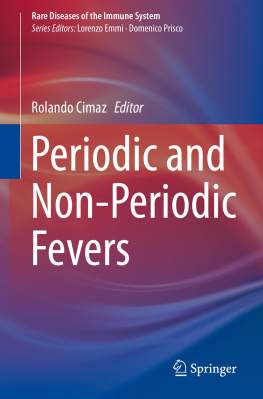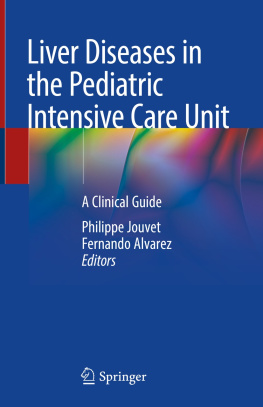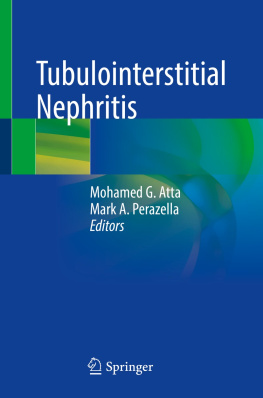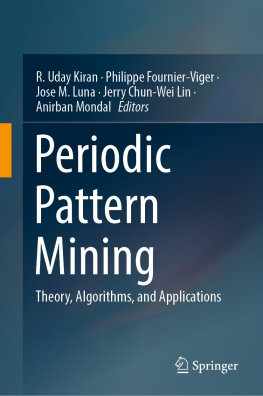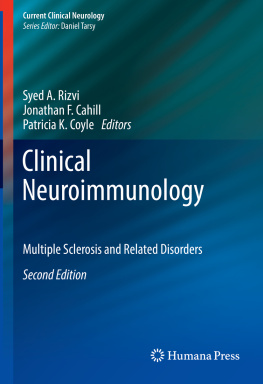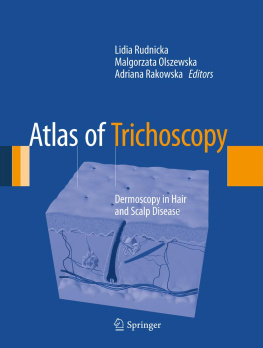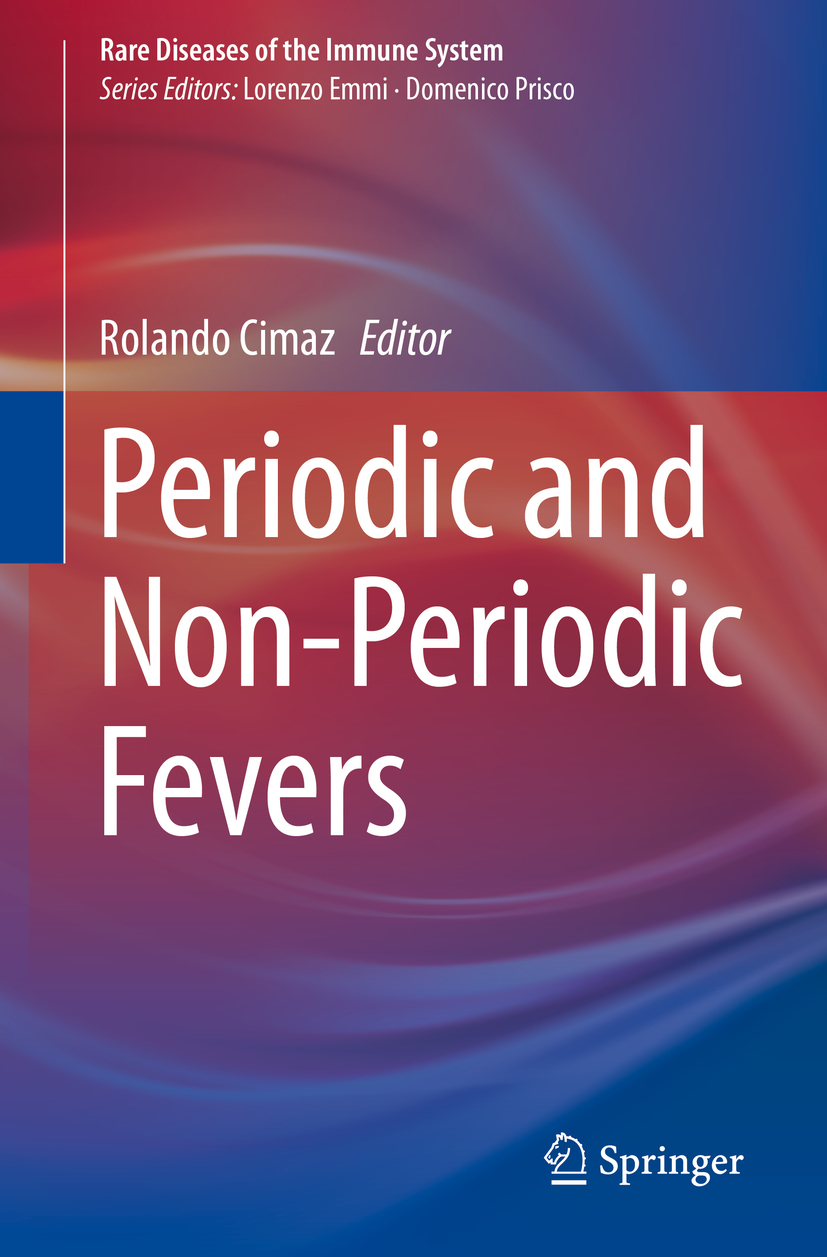Rare Diseases of the Immune System
Series Editors
Lorenzo Emmi and Domenico Prisco
Editorial Board
Carlo Salvarani , Renato Alberto Sinico , Pier Luigi Meroni , Dario Roccatello , Marco Matucci-Cerinic , Lorenzo Emmi , Marco Gattorno , Fabrizio de Benedetti , Rolando Cimaz , Alessandro Plebani , Cosima Baldari , Mario Milco DElios and Augusto Vaglio
Periodic and Non-Periodic Fevers
Editor
Rolando Cimaz
Department of Clinical Sciences and Community Health, University of Milano, Milano, Italy
ASST-Gaetano Pini, Milano, Italy
ISSN 2282-6505 e-ISSN 2283-6403
Rare Diseases of the Immune System
ISBN 978-3-030-19054-5 e-ISBN 978-3-030-19055-2
https://doi.org/10.1007/978-3-030-19055-2
Springer Nature Switzerland AG 2020
This work is subject to copyright. All rights are reserved by the Publisher, whether the whole or part of the material is concerned, specifically the rights of translation, reprinting, reuse of illustrations, recitation, broadcasting, reproduction on microfilms or in any other physical way, and transmission or information storage and retrieval, electronic adaptation, computer software, or by similar or dissimilar methodology now known or hereafter developed.
The use of general descriptive names, registered names, trademarks, service marks, etc. in this publication does not imply, even in the absence of a specific statement, that such names are exempt from the relevant protective laws and regulations and therefore free for general use.
The publisher, the authors, and the editors are safe to assume that the advice and information in this book are believed to be true and accurate at the date of publication. Neither the publisher nor the authors or the editors give a warranty, expressed or implied, with respect to the material contained herein or for any errors or omissions that may have been made. The publisher remains neutral with regard to jurisdictional claims in published maps and institutional affiliations.
This Springer imprint is published by the registered company Springer Nature Switzerland AG
The registered company address is: Gewerbestrasse 11, 6330 Cham, Switzerland
Scogliera
Laura Maddii Emmi (Private collection)
Foreword
Periodic diseases have long held a special fascination for physicians and scientists alike. In ancient times, such illnesses were tied to natural phenomena, such as the phases of the moon. Later, it became clear that the periodicity of some illnesses, such as malaria, is linked to the life cycle of the causative organism, while in other cases, such as relapsing fever, periodicity is the result of the cat and mouse game between a microbial pathogen and the host immune response. More recently, with the discovery of CLOCK genes, some forms of biologic periodicity could be explained by molecular pathways with an intrinsic oscillation constant.
Our understanding of the periodic fever syndromes evolved within this conceptual landscape. By the 1980s, it was well-established that the periodicity of some febrile illnesses, such as those noted above, is driven by host-pathogen interactions. Yet there remained an intriguing group of illnesses, the best recognized of which was familial Mediterranean fever (FMF), in which there was recurrent fever without any overt evidence of infection. The ethnic predilection of FMF, taken together with its autosomal recessive inheritance, strongly suggested a disease mechanism intrinsic to the host. With the advent of the Human Genome Project and positional cloning, I was drawn to FMF as an experiment of nature through which we could discover a molecular tuning fork regulating fever and inflammation in humankind.
Ultimately, we were successful in discovering the MEFV gene and its encoded protein, pyrin. Although not immediately obvious at the time, pyrin and its eponymous N-terminal fragment have helped to define multiple innate immune molecules and pathways, in some cases leading to life-altering targeted therapies. Moreover, the positional cloning of MEFV was the first in a long progression of gene discoveries defining new monogenic febrile disorders and a new family of illnessesthe autoinflammatory diseasesthat are inborn errors of the innate immune system. This concept has been subsequently extended to genetically complex illnesses, such as systemic-onset juvenile idiopathic arthritis, Stills disease, Behets disease, and the syndrome of periodic fever with aphthous stomatitis, pharyngitis, and cervical adenitis (PFAPA). In most cases, both the monogenic and genetically complex disorders are more aptly described as recurrent rather than periodic, and the cyclicity and responsiveness to environmental cues vary greatly even among family members harboring the same genetic variant. Many of these disorders are elegantly described in this volume.
Notwithstanding the significant advances in the field of autoinflammation, there are still many puzzles awaiting the enquiring mind. Perhaps most notable, we still do not have a clear concept of the periodicity (or episodic nature) of these illnesses. For disorders like PFAPA, in which the attacks are predictable months in advance, it seems likely that there may be a feedback loop between the host microbiome and the developing lymphoid tissue of the oropharynx, but the details remain elusive. Even for disorders like FMF, which are admittedly more recurrent than periodic, we are far from a molecular account of how attacks are triggered and how they are ultimately turned off.
This dialectic of mystery and discovery is exactly how it should be in science. I truly hope that you will find this volume to be your own travel guide to this exciting new world of human disease and your inspiration to take the field to the next level.
Dan Kastner
February 6, 2019
Preface
Recurrent fevers are a frequent problem in children. While infections are the most common causes, genetic and autoinflammatory disorders have been increasingly recognized. These syndromes are sometimes very difficult to diagnose, and several can be discovered only after a thorough work-up for fever of unknown origin, but improvements in genetic techniques have allowed more and more precise definitions. Enormous advancements have been achieved in treatment with the use of biologic therapies, in particular with the cytokine inhibitors.
This volume includes the description of several classic conditions as well as of novel and rarer forms. The authors of these chapters are international experts in the field and have provided clear descriptions of the clinical findings and of therapeutic implications. The readers, whether general pediatricians, pediatric rheumatologist, or immunologist, will certainly benefit from these updated informations, which we tried to keep as practical as possible.
Rolando Cimaz
Milan, Italy
Contents
Marco Gattorno
Estbaliz Iglesias , Antoni Noguera-Julian , Laia Alsina and Jordi Antn

